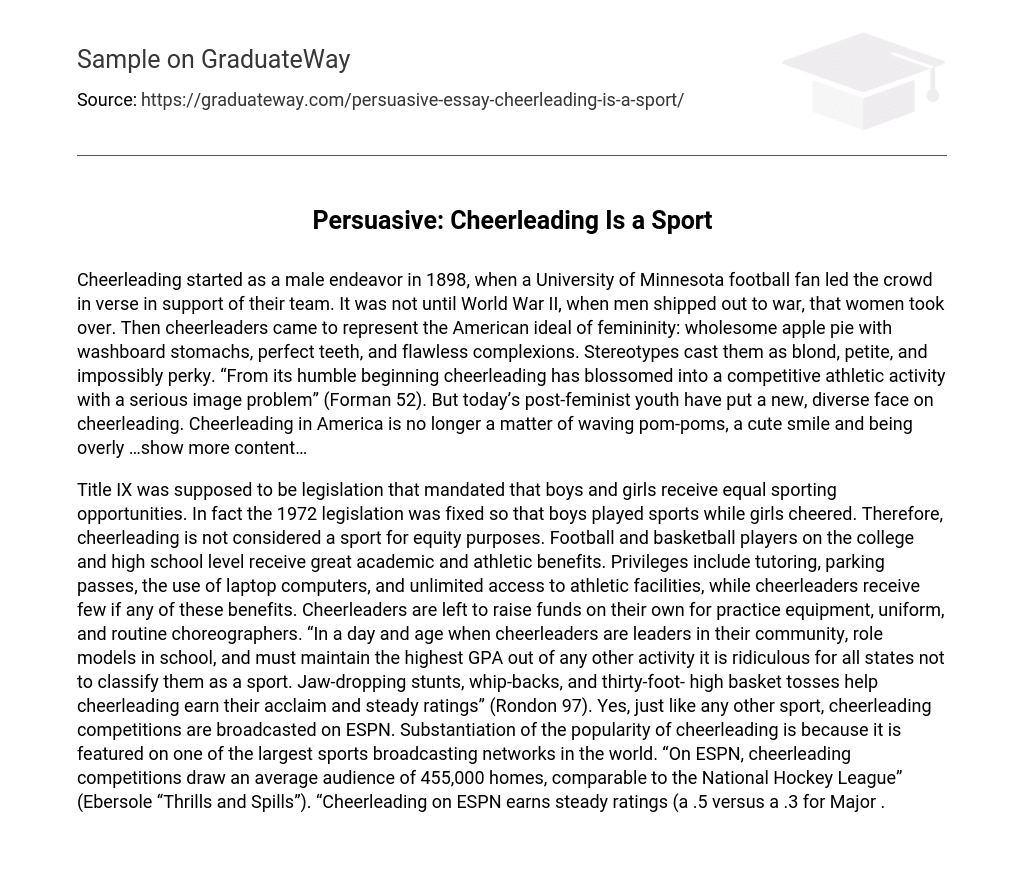Cheerleading originated as a male pursuit in 1898 when a fan of the University of Minnesota football team led the crowd in support of their team through verse. However, during World War II, with men off at war, women took over cheerleading. From then on, cheerleaders became symbolizations of the American ideal of femininity, embodying wholesomeness, with flat stomachs, perfect teeth, and flawless skin. Stereotypes depicted them as blonde, petite, and excessively energetic. Cheerleading has now evolved from its modest beginnings into a competitive athletic activity that has faced challenges regarding its image (Forman 52). Nevertheless, today’s post-feminist youth have brought a new and diverse perspective to cheerleading. In America, cheerleading has transformed beyond waving pom-poms and putting on a cute smile; it is now seen as an expression of athleticism and inclusivity.
Title IX was originally designed to ensure equal opportunities in sports for both boys and girls. However, it ultimately ended up favoring boys, leading to girls participating in cheerleading instead of playing sports. As a result, cheerleading is not recognized as a sport for the purpose of achieving equality. Unlike college and high school football and basketball players who enjoy various academic and athletic benefits such as tutoring, parking passes, laptop use, and unlimited access to sports facilities, cheerleaders receive very few or no such advantages. They are responsible for raising funds on their own for practice equipment, uniforms, and routine choreographers. Despite these challenges, cheerleaders play vital roles as leaders in their community and serve as role models in school while maintaining the highest GPAs among all activities. It is nonsensical that not all states classify cheerleading as a sport when considering the impressive stunts like whip-backs and thirty-foot-high basket tosses they perform to earn recognition and attract consistent viewership ratings. In fact, ESPN broadcasts cheerleading competitions with an average audience of 455,000 homes – comparable to the viewership of the National Hockey League.





